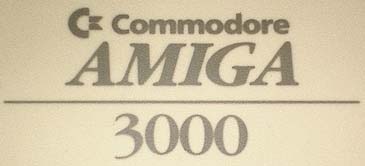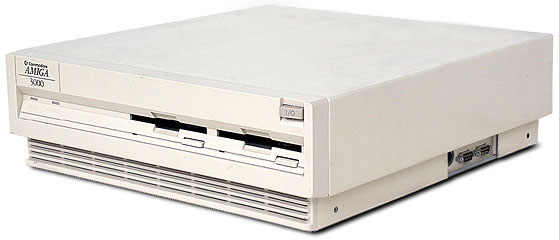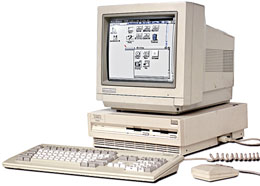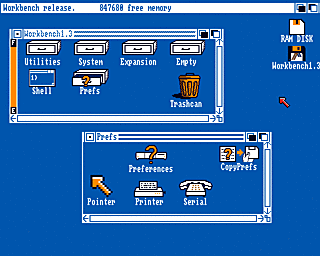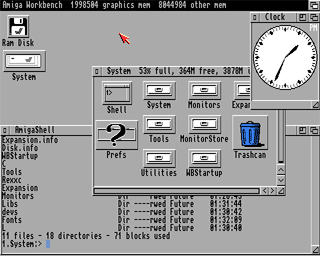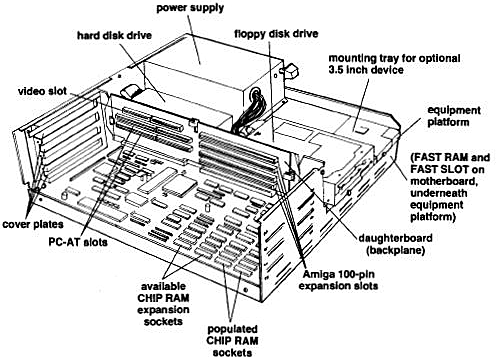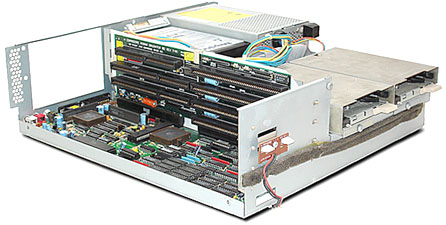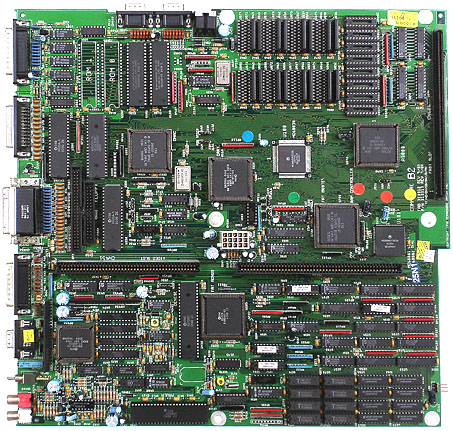|
|---|
History of the Amiga Computer |
- 1982: Hi-Toro Incorporated is formed by a group of midwest investors trying to
cash in on the video game craze. The name was later changed to Amiga, Incorporated after
being confused with the lawn-mower manufacturer, Toro.
- 1983: Information is leaked about an incredible computer codenamed Lorraine
featuring unheard of graphics and sound capabilities, multitasking, 80 column display,
5+ megs of RAM and MORE!
- 1984: August - Commodore purchases Amiga Corporation.
- 1985: July - Commodore unveils the new Amiga 1000 in New York, for US$1300.
- 1986: Commodore releases Transformer software for the Amiga, which, along with the Commodore 1020 5 1/4-inch disk drive, provides limited MS-DOS compatibility.
- 1987: January - Commodore announces the Amiga 500.
- 1987: January - Commodore announces the Amiga 2000.
- 1988: December - Commodore announces the A2286D Bridgeboard for the Amiga 2000. The A2286D contains an 8-MHz Intel 80286 and a 1.2MB 5 1/4-inch disk drive.
- 1988: Commodore introduces the Amiga 2000HD.
- 1988: Commodore introduces the Amiga 2500.
- 1989: January - Commodore announces that 1 million Amiga computers have been sold.
- 1989: November - Commodore announces the Amiga 2500/30. It is essentially an Amiga 2000 with a 2630 Accelerator Board (25-MHz 68030 and 68882 math coprocessor).
- 1990: April - Commodore offers Amiga 1000 owners US$1000 to trade in their Amiga on a new Amiga 2000.
- 1990: June - Commodore ships the Amiga A3000 computer.
- 1990: September - NewTek ships the Video Toaster, a hardware/software real-time video effects tool for the Amiga 2000, for US$1600.
- 1990: Commodore announces the Amiga 3000. Prices start at US$4100 with a monitor.
- 1991: January - Commodore releases the CDTV package. It features a CD-ROM player integrated with a 7.16-MHz 68000-based Amiga 500. List price is US$1000.
- 1991: Commodore unveils the Amiga 3000UX. Cost is US$5000, without a monitor.
- 1992: March - Commodore introduces the Amiga 600 for a base price of $500.
- 1992: September - Commodore introduces the Amiga 4000.
- 1992: December - Commodore introduces the Amiga 1200.
- 1994: Commodore International and Commodore Electronics (two of the many international components of Commodore Business Machines) file for voluntary liquidation.
- 1995: April - At an auction in New York, ESCOM buys all rights, properties, and technologies of Commodore.
- 1997: Gateway buys bankrupt Amiga.
Source:
Chronology of Events in the History of Microcomputers
| |
|---|
|
